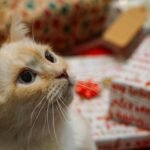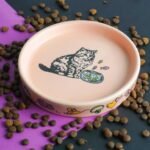When your feline friend turns their nose up at their water bowl for the third time today, you might find yourself wondering if there’s a better solution. Cat water fountains have become increasingly popular among pet owners, but with so many options available and varying price points, the question remains: are cat water fountains worth the investment?
The short answer is that for most cats and their families, these innovative drinking systems offer significant benefits that far outweigh their costs. However, like any pet product, they’re not a one-size-fits-all solution. Let’s dive deep into everything you need to know about cat water fountains to help you make the best decision for your furry companion.
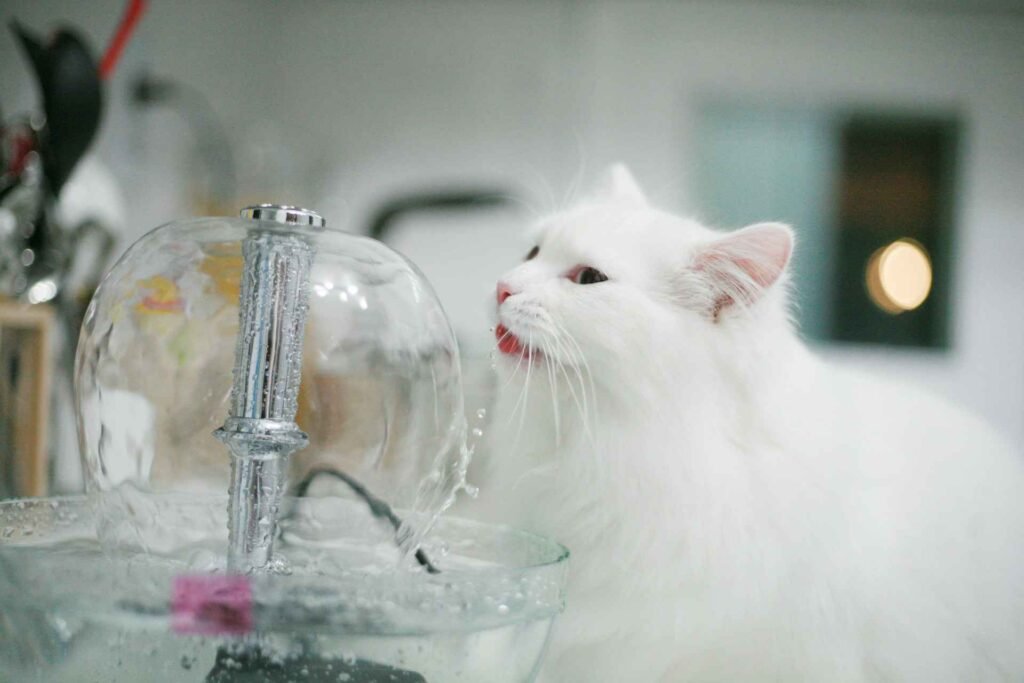
Your Cat’s Natural Drinking Behavior
Cats have fascinating drinking habits that stem from their wild ancestors. Unlike dogs who lap up water enthusiastically, cats are naturally cautious drinkers. In the wild, moving water sources like streams and springs were typically safer than stagnant pools, which could harbor harmful bacteria or predators.
This evolutionary trait explains why many domestic cats prefer or seem more interested in drinking from faucets than their regular bowls. They’re instinctively drawn to fresh, moving water because it signals safety and quality.
Additionally, cats have a relatively low thirst drive compared to other animals. They evolved in desert climates where water was scarce, so they developed the ability to concentrate their urine and get most of their moisture from prey. This means our house cats often don’t drink enough water for optimal health, making any encouragement to increase their water intake beneficial.
What Makes Cat Water Fountains Different?
Cat water fountains operate on a simple yet effective principle: they keep water constantly circulating and filtering. Most models use a small, quiet pump to draw water from a reservoir, push it through one or more filters, and then allow it to flow back down in various patterns such as gentle streams, bubbling springs, or cascading waterfalls.
The continuous movement serves multiple purposes. First, it keeps the water oxygenated and fresh-tasting, which appeals to cats’ natural preferences. Second, the motion and sound often attract cats who might otherwise ignore a static bowl. Third, the built-in filtration system removes impurities, hair, and debris that would otherwise accumulate in standing water.
Modern cat fountains come in various materials including stainless steel, ceramic, and BPA-free plastic. They typically feature multiple drinking areas to accommodate cats with different preferences, and many include LED lights or other features to make the water source more appealing, especially in low-light conditions.
The Health Benefits: Why Hydration Matters So Much
Proper hydration plays a crucial role in your cat’s overall health, and this is where water fountains truly shine. Cats who drink more water experience numerous health benefits that can significantly impact their quality of life and longevity.
Increased water consumption helps prevent urinary tract issues, which are unfortunately common in cats, especially males. When cats are well-hydrated, their urine becomes more diluted, reducing the concentration of minerals that can form painful crystals or stones. Regular water intake also helps flush bacteria from the urinary system before infections can take hold.
Kidney health is another major consideration. Cats are prone to kidney disease as they age, and adequate hydration supports optimal kidney function by helping these vital organs filter waste products more effectively. While water fountains can’t prevent all kidney issues, they can certainly contribute to better kidney health throughout your cat’s life.
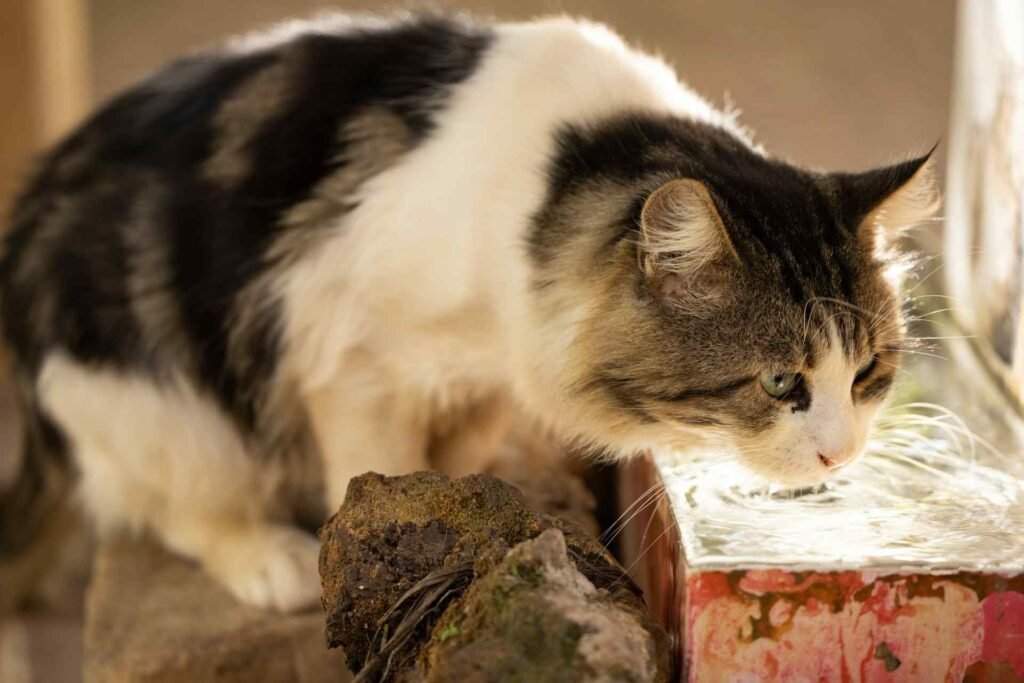
The digestive system also benefits from proper hydration. Well-hydrated cats experience better digestion and are less likely to suffer from constipation. This is particularly important for cats who eat primarily dry food, which contains very little moisture compared to wet food or natural prey.
Comparing Water Fountains to Traditional Bowls
| Feature | Traditional Water Bowl | Cat Water Fountain |
|---|---|---|
| Water Freshness | Becomes stale quickly | Constantly circulated and filtered |
| Appeal to Cats | May be ignored by picky drinkers | Moving water attracts most cats |
| Maintenance | Daily refilling, frequent cleaning | Weekly refilling, periodic filter changes |
| Initial Cost | low – medium | medium – high |
| Ongoing Costs | None | Filter replacements, electricity |
| Capacity | Usually 1-2 cups | Often 2-4+ cups |
| Debris Collection | Hair and dust settle quickly | Filtration system removes contaminants |
| Recommendation | Summark Elevated Cat Bowls | Neareal Stainless Steel Cat Water Fountain |
This comparison reveals why many cat owners find water fountains to be a worthwhile upgrade. While traditional bowls require daily attention and frequent refilling, fountains can maintain fresh water for days or even a week, depending on the number of cats in your household.
The psychological appeal cannot be understated either. Many cats who barely touched their regular water bowls become enthusiastic drinkers once a fountain is introduced. The gentle sound of flowing water, combined with its constant movement, triggers their natural instincts to seek out fresh, safe water sources.
Are Cat Water Fountains Good for All Cats?
While cat water fountains are beneficial for most felines, certain cats gain even more from these devices. Senior cats, who may be less mobile or suffering from age-related health issues, often benefit significantly from the encouragement to drink more water. The accessibility of multiple drinking spots and the appeal of moving water can help maintain their hydration levels.
Cats with a history of urinary issues are also excellent candidates for water fountains. The increased water consumption can help prevent recurrence of painful conditions like urinary tract infections or crystal formation. However, it’s important to work with your veterinarian for comprehensive treatment of any existing urinary problems.
Cleaning water bowls becomes less of a daily concern with fountains, as the filtration system handles much of the cleaning work automatically. This makes them particularly appealing for busy pet owners who want to ensure their cats have constant access to fresh water without daily maintenance.
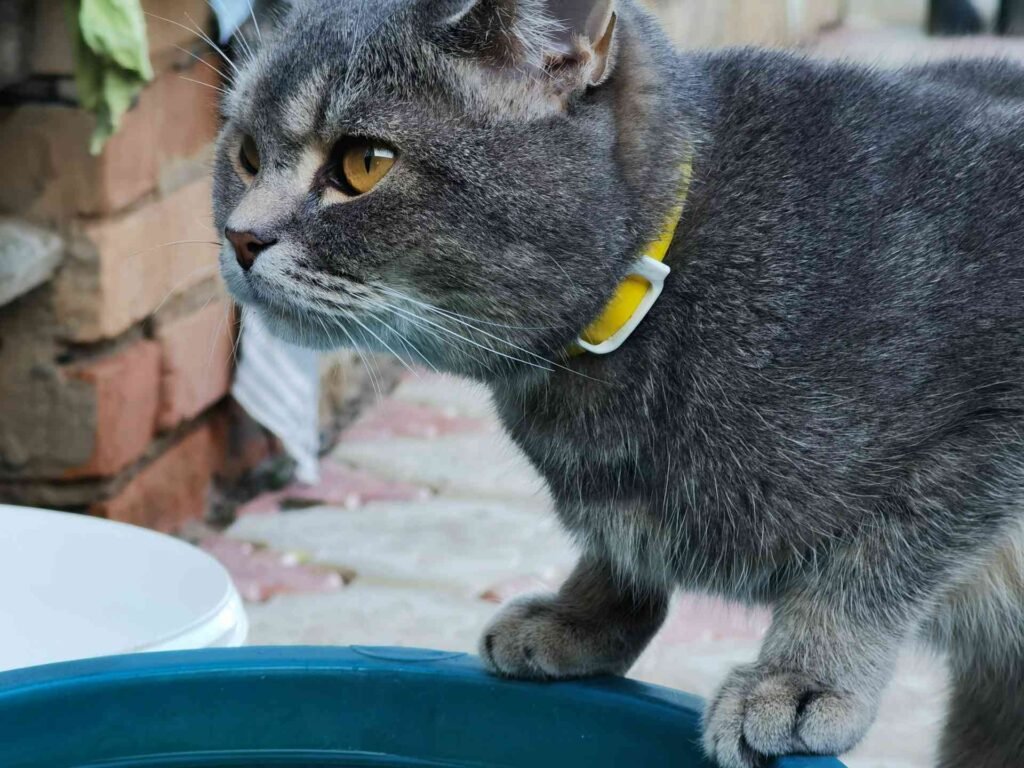
Cats who eat primarily dry food are another group that benefits tremendously from fountains. Dry kibble contains very little moisture, so these cats need to make up the difference by drinking more water. The encouragement provided by a fountain can help bridge this gap more effectively than relying solely on their natural thirst drive.
Potential Drawbacks and Considerations
Despite their many benefits, cat water fountains aren’t perfect for every situation. The initial investment can be significant, especially for higher-quality models with advanced filtration systems. Budget-conscious pet owners need to weigh this upfront cost against the long-term benefits and potential savings on veterinary bills related to dehydration or urinary issues.
Ongoing maintenance costs include replacement filters, which typically need changing every 2-4 weeks depending on usage and water quality. These can add up over time, though many owners find the convenience and health benefits justify the expense.
Some cats are initially wary of the sound and movement of water fountains. While most adapt quickly, a small percentage may never fully embrace the new drinking system.
Power outages present another consideration. When the electricity goes out, the fountain stops working, which could leave your cat without their preferred water source. Having a backup traditional bowl available during outages is a simple solution to this potential issue.
Choosing the Right Fountain for Your Cat
The market offers numerous fountain styles, each designed to appeal to different cat preferences and household needs. Understanding your cat’s drinking habits can help guide your selection process.
Some cats prefer to drink from a gentle stream, while others enjoy lapping water from a pool area. Multi-level fountains accommodate various preferences by offering different drinking zones at different heights. This is particularly helpful in multi-cat households where individual preferences may vary significantly.
Material choice impacts both durability and maintenance ease. Stainless steel fountains are typically the most hygienic and easiest to clean, while ceramic options offer aesthetic appeal and weight stability. Plastic fountains are usually the most affordable but may require more frequent replacement.
Capacity considerations depend on the number of cats in your household and how often you prefer to refill the reservoir. Larger households with multiple cats benefit from higher-capacity models that can go longer between refills. Filter quality and replacement availability are crucial long-term factors.
Real-World Benefits: What Cat Owners Notice
Cat owners who switch to water fountains often report noticeable changes in their pets’ behavior and health. Many notice their cats drinking more frequently throughout the day, which is exactly what veterinarians recommend for optimal feline health.
The convenience factor is significant for busy households. Instead of checking and refilling water bowls multiple times daily, fountain owners typically need to refill their systems only once or twice per week. This consistency ensures cats always have access to fresh water, even during hectic periods.
Do cats drink more water in the summer? Yes, and fountains make it easier for them to stay properly hydrated during warmer months when their water needs increase. The constant circulation also helps keep the water cooler than it would be in a static bowl.
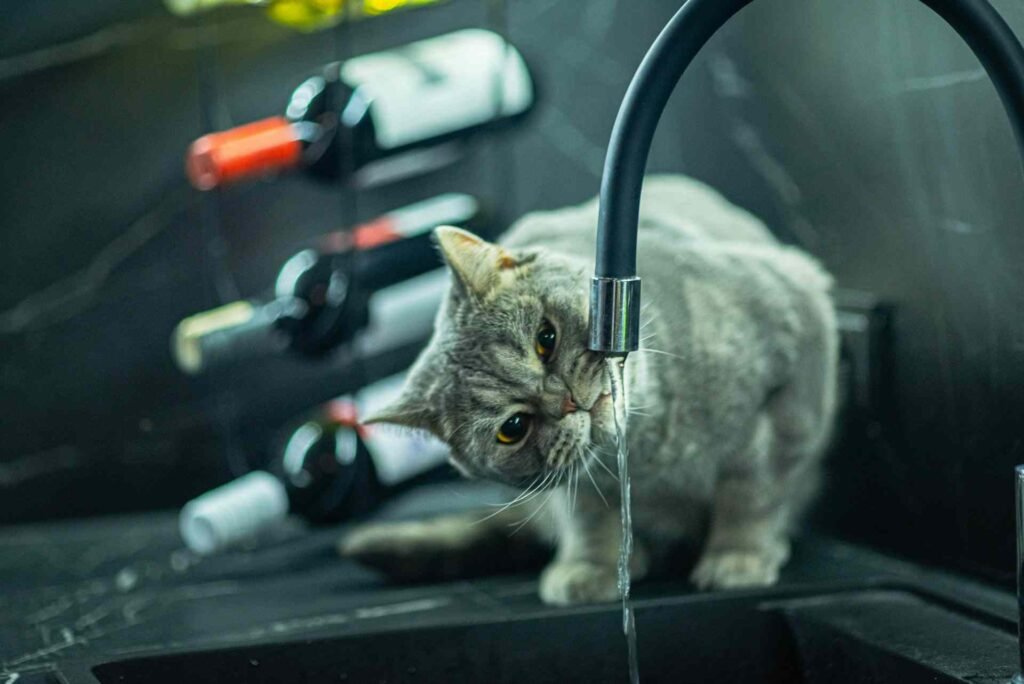
Many owners appreciate the reduction in water bowl-related messes. Traditional bowls can be knocked over, splashed, or pushed around, creating wet spots and potential damage to flooring. Fountains are typically heavier and more stable, reducing these incidents.
Maintenance Made Simple
Proper maintenance ensures your cat fountain continues providing fresh, clean water while operating efficiently. Most fountains require weekly cleaning of the pump and reservoir, which involves disassembling the unit, washing components with pet-safe cleaners, and reassembling everything.
Filter replacement schedules vary by manufacturer and usage, but most recommend changing filters every 2-4 weeks. Some models use multiple filter types, including carbon filters for odor and taste improvement and foam pre-filters that catch larger debris before it reaches the main filtration system.
Brushing your cat’s teeth isn’t the only hygiene routine that benefits your cat’s health. Regular fountain maintenance prevents bacterial buildup and ensures the water remains appealing to your feline friend. Clean fountains also operate more quietly and efficiently than neglected ones.
Descaling may be necessary in areas with hard water. Mineral buildup can affect pump performance and water flow, so periodic deep cleaning with appropriate descaling solutions helps maintain optimal function.
Cost Analysis: Investment vs. Value
When evaluating whether cat water fountains are worth the investment, consider both immediate and long-term costs and benefits. Quality fountains typically cost between $30-150 initially, with ongoing filter costs ranging from $20-40 annually depending on the model and usage.
Compare this to potential veterinary costs associated with dehydration-related issues. Urinary tract infections, crystal formation, and kidney problems can result in expensive diagnostic tests and treatments. While fountains can’t prevent all health issues, they can contribute significantly to prevention strategies.
The convenience value is harder to quantify but very real for busy pet owners. Time saved on daily bowl maintenance and worry reduced about water freshness during long days at work adds meaningful value to many households.
Keeping your cat entertained while at work becomes easier when you know they have access to fresh, appealing water throughout the day, reducing one source of concern about their wellbeing during your absence.
Special Considerations for Multi-Cat Households
Homes with multiple cats face unique challenges when it comes to water provision. Individual cats may have different preferences for water temperature, flow pattern, or drinking location. Some cats are territorial about food and water resources, while others prefer to share communally.
Large-capacity fountains with multiple drinking areas can accommodate these varying needs while reducing competition between cats. Strategic cat furniture placement principles apply to water fountains too, positioning them in neutral areas where all cats feel comfortable approaching helps ensure everyone stays properly hydrated.
Consider the personality dynamics in your household. Dominant cats might monopolize water sources, while shy cats may need alternative options to feel secure while drinking. Some multi-cat homes benefit from having multiple smaller fountains rather than one large unit.
Technology and Modern Features
Today’s cat water fountains often include smart features that enhance their functionality and user experience. LED lights can make fountains more visible and appealing to cats, especially in darker areas of the home. Some models include water level indicators that alert owners when refilling is needed.
Ultra-quiet pumps address concerns about noise in bedrooms or quiet spaces. Advanced filtration systems may include multiple stages of cleaning, removing everything from chlorine to bacteria. Some models even feature app connectivity for monitoring and maintenance reminders.
Some fountains include cooling features or recommendations for adding ice, though most cats prefer room temperature water that fountains naturally provide through circulation.
Environmental Impact and Sustainability
Cat water fountains can actually be more environmentally friendly than traditional bowl systems when used properly. The reduced need for frequent water changes means less waste, especially in households where owners previously changed bowl water daily as a precaution.
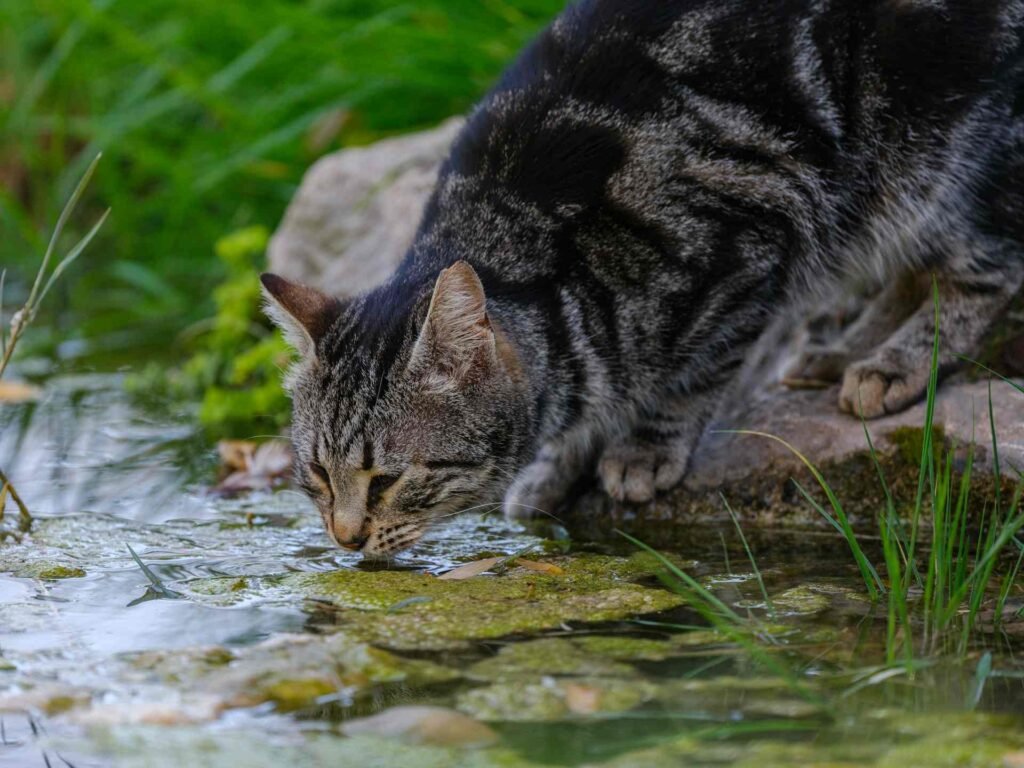
Energy consumption is minimal for most fountain pumps, typically using less electricity than a nightlight. The longevity of quality fountains also reduces waste compared to frequently replacing cheaper bowls that crack or become stained over time.
Filter replacement does create some ongoing waste, but many manufacturers now offer biodegradable or recyclable filter options. Some fountain designs allow for cleaning and reusing filter components, extending their useful life.
Signs Your Cat Would Benefit from a Fountain
Certain behaviors indicate that your cat might be an excellent candidate for a water fountain upgrade. Cats who frequently drink from faucets, show interest in running water, or seem to ignore their current water bowl are often enthusiastic fountain users.
Meowing at night sometimes includes requests for fresh water, especially if their current bowl has been sitting out for hours. Fountains address this concern by providing constantly refreshed water that appeals to cats regardless of the time of day.
Cats who play with their water, paw at their bowls, or seem to prefer water from unusual sources like plant saucers or pet dishes might be seeking the movement and freshness that fountains provide naturally.
Frequently Asked Questions
Do cat water fountains really encourage cats to drink more?
Most cats do drink more water when provided with a fountain, particularly those who previously showed little interest in still water. The combination of movement, sound, and constant freshness appeals to cats’ natural instincts and makes hydration more appealing.
How often do I need to clean a cat water fountain?
Weekly cleaning is recommended for most fountains, involving disassembly and washing of all components. Daily spot-cleaning of any visible debris and weekly filter changes help maintain optimal function and water quality.
Are cat water fountains safe to leave on all the time?
Yes, cat water fountains are designed for continuous operation. The pumps are built to run constantly and typically use very little electricity. However, always follow manufacturer guidelines and inspect cords regularly for any signs of damage.
What if my cat doesn’t like the fountain?
Some cats need time to adjust to new water sources. Try placing the fountain near their current water bowl initially, then gradually moving the bowl away once they’re comfortable with the fountain. The adjustment period typically lasts a few days to a week.
Do I still need to provide regular water bowls if I have a fountain?
Having a backup water source is always wise, especially during power outages or fountain maintenance. However, once cats adapt to fountains, they typically prefer them over static bowls for daily hydration.
The Bottom Line: Making Your Decision
So, are cat water fountains worth it? For the majority of cat owners, the answer is a resounding yes. The combination of health benefits, convenience, and appeal to cats’ natural instincts makes them a valuable investment in your pet’s wellbeing. The upfront cost and ongoing maintenance requirements are generally offset by the peace of mind that comes from knowing your cat has constant access to fresh, appealing water.
Consider your specific situation when making this decision. Cats with health issues, senior cats, dry food eaters, and households with multiple cats tend to benefit most dramatically from fountain systems. However, even healthy young cats often show increased water consumption and enjoyment when fountains are introduced.
The key is choosing a quality fountain appropriate for your cat’s size, preferences, and your household’s needs, then maintaining it properly to ensure continued performance. With proper care, a good cat water fountain can provide years of improved hydration for your feline friend. Remember that every cat is unique, and what works wonderfully for one might take adjustment time for another.
Ultimately, when weighing whether cat water fountains are worth the investment, consider them as part of a comprehensive approach to feline health and happiness. Just like providing quality food, regular veterinary care, and mental stimulation, ensuring proper hydration is one of the fundamental ways we can support our cats’ wellbeing throughout their lives. The gentle sound of flowing water, the convenience of reduced maintenance, and most importantly, the sight of your cat eagerly drinking fresh, clean water make these innovative devices a worthwhile addition to most feline-loving households. Your cat’s health and your peace of mind are priceless, and if a water fountain helps achieve both while making your daily routine a little easier, that’s a win worth celebrating.
Looking for more? Explore our Cat Accessories section for more posts like this, visit the Blog for fun and insightful reads, or browse our full Cat Category for everything feline-related, from care to comfort.
Disclaimer: This article is for informational purposes only and does not substitute for professional veterinary advice. Always consult your veterinarian for diagnosis and treatment tailored to your cat’s individual needs. Please verify current product information directly on the retailer’s site before purchasing.
Check out our most recent articles!
- Cats and Snow: Why Some Love It and Others Don’tSnow isn’t just uncomfortable for many cats, it’s a complete sensory overload. From cold paw pads to wet fur and changed landscapes, winter challenges feline comfort in unexpected ways. Learn how to recognize stress signals and create cozy alternatives for snow-averse cats.
- Christmas Names for Cats: From Classic to Creative Holiday IdeasNaming your holiday cat goes beyond festive fun. Discover why Christmas-inspired names age beautifully, spark instant connections with fellow pet lovers, and capture the warmth cats bring to our homes during the most magical season of the year.
- How to Keep Your Cat From Drinking Christmas Tree WaterYour cat’s obsession with Christmas tree water isn’t just annoying, it’s genuinely dangerous. From harmful bacteria to toxic additives, that festive reservoir poses real health risks. Discover practical solutions that protect your pet without sacrificing holiday cheer.
- Best Cat Toys for Christmas: The Ultimate Guide to Holiday JoyNot all Christmas gifts end up under the tree, some get batted across the floor at 3 AM. Explore the wonderful world of holiday cat toys that match your feline’s personality, from plush companions for cuddlers to high-tech options for the eternally energetic.
- Are Fake Christmas Trees Safe for Cats? A Holiday Safety GuideThat beautiful Christmas tree might look festive to you, but to your cat, it’s an irresistible climbing gym with built-in toys. Find out whether artificial trees are truly safer for cats and discover the hidden dangers lurking in your holiday decorations.
- The Best Christmas Gifts for Cats That’ll Actually Get Used (Not Ignored)Not all Christmas gifts land on the nice list with our feline friends. Discover which presents actually spark joy in cats and which ones end up gathering dust under the couch by New Year’s Day.
- Do Cats Eat Less in Winter? How Cold Weather Affects Your Cat’s AppetiteWinter brings more than just cold weather, it can completely change your cat’s eating habits. From bored indoor cats to outdoor ferals fighting to survive, discover what’s really driving those appetite changes and how to respond appropriately.
- Are Humidifiers Good for Cats? A Complete Safety & Health GuideNot all humidifiers are cat-safe, and some common practices could be toxic. Learn why cool mist beats warm mist, why essential oils are dangerous for felines, and how proper humidity levels between 30-50% support your cat’s breathing and coat health.
- How to Protect Leather Furniture From Cats (Without Losing Your Mind)Leather furniture and cat claws seem like natural enemies, but they don’t have to be. Learn why your cat is drawn to that expensive couch in the first place, and how simple redirects can save your furniture while keeping your cat’s natural behaviors satisfied.
- The Best Material for Cat Bowls: Protect Your Cat from BacteriaStainless steel, ceramic, or plastic, which material keeps your cat healthiest? We break down the science behind cat bowl materials, revealing why some harbor bacteria and others last decades without compromising your feline’s wellbeing.




